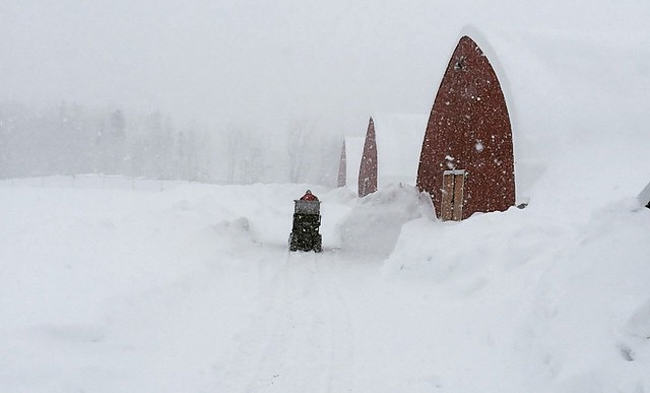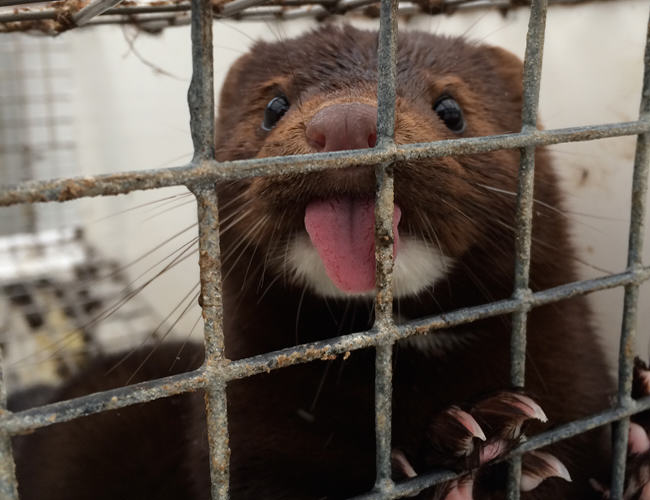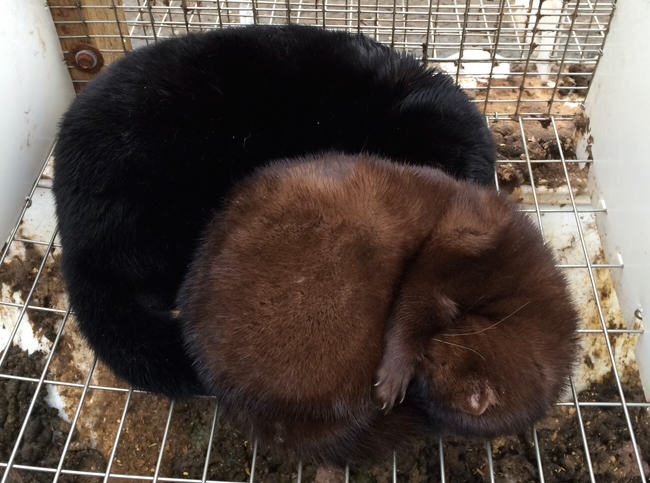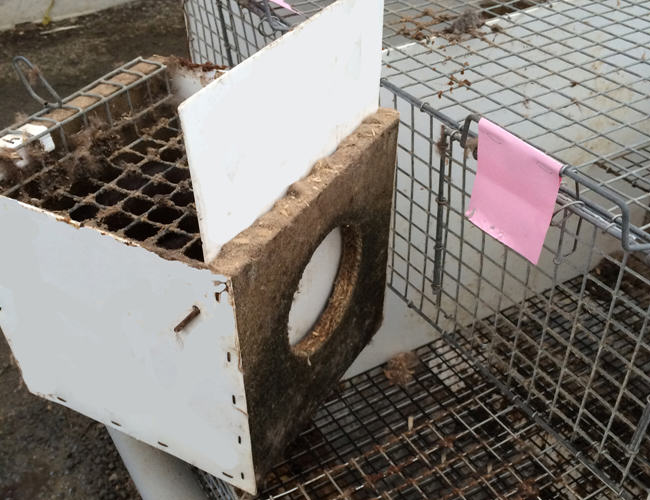Have you ever visited a mink farm? Are you interested to know more about the care farmed mink receive? Senior Truth About Fur writer Alan Herscovici asked “Les”, a third-generation Nova Scotia mink farmer, to give us a personal tour and to explain the work he does during a typical year on a mink farm. In this first installment, Les explains the beginning of the mink production cycle: breeding. Welcome to Spring on a mink farm!

Truth About Fur (TaF): What does Spring mean for you on the mink farm?
Les (Nova Scotia mink farmer): Like most farmers, our production cycle begins in the Spring. As the days get longer in the first half of March, it’s breeding season for the mink.
We will have selected our breeding stock back in November/December. In choosing breeders, we take several factors into account. We are looking for size, fur colour and quality, for sure. But we are also watching for females that produce larger litters and take good care of their young.
We also want mink that are easy to handle and that thrive in the farm environment.
Not least important, we select for resistance to disease; we use blood tests to help identify the most disease-resistant animals for reproduction. We are constantly working to improve the genetic quality of our herd, for health, temperament and fur quality.
SEE ALSO: A YEAR ON A MINK FARM. PART 2: WHELPING AND WEANING
TaF: How are mink bred?
Les: It’s all natural, there’s no artificial insemination. For breeding, we bring the females to the males because they are easier to manage.

On our farm we have done something to make this much easier: instead of catching the female to move her, we developed removable and interchangeable nest boxes. When the female is in her nest box, we can close the door to her larger pen with a sliding panel. We carry her nest box, with the female in it, to the male’s pen and insert it there in place of his, after shooing the male into his pen. Then all we have to do is open the sliding panel and the party begins.
After mating, the female will return to her nest box, which is her territory. We close the sliding panel and bring her back to her pen. The whole operation is completed without handling the animals, with no trouble or stress for either mink or people!

TaF: Do males breed more than one female?
Les: Yes, each male is usually mated with about five females. When we introduce a female into a male’s pen, we watch to be sure that mating occurs and record that date. The female will be bred with a second male about a week later, because ovulation in mink is provoked by intercourse. The second mating also provides insurance in case the first male was infertile. We try to breed our females three times, for maximum assurance.
TaF: What happens next?
Les: It is important to disturb the mink as little as possible during the period when the fertilized eggs are implanting. Some producers will increase the hours of light in the barn during this period, but we find that the natural lengthening of the days is sufficient for implantation and gestation. We will also decrease the fat in the females’ diet and increase the percentage of protein during gestation.

***
SEE ALSO: A YEAR ON A MINK FARM. PART 2: WHELPING AND WEANING, PART 3: GROWING UP, AND PART 4: FUR TIME











I raised mink for years and this sounds like a well-run operation.
Interesting article. Thanks for sharing
Mink is a stunning fur’s animal
xoxo
http://www.welovefur.com
Nice article. Thanks for sharing. My uncle raised mink in Minnesota.